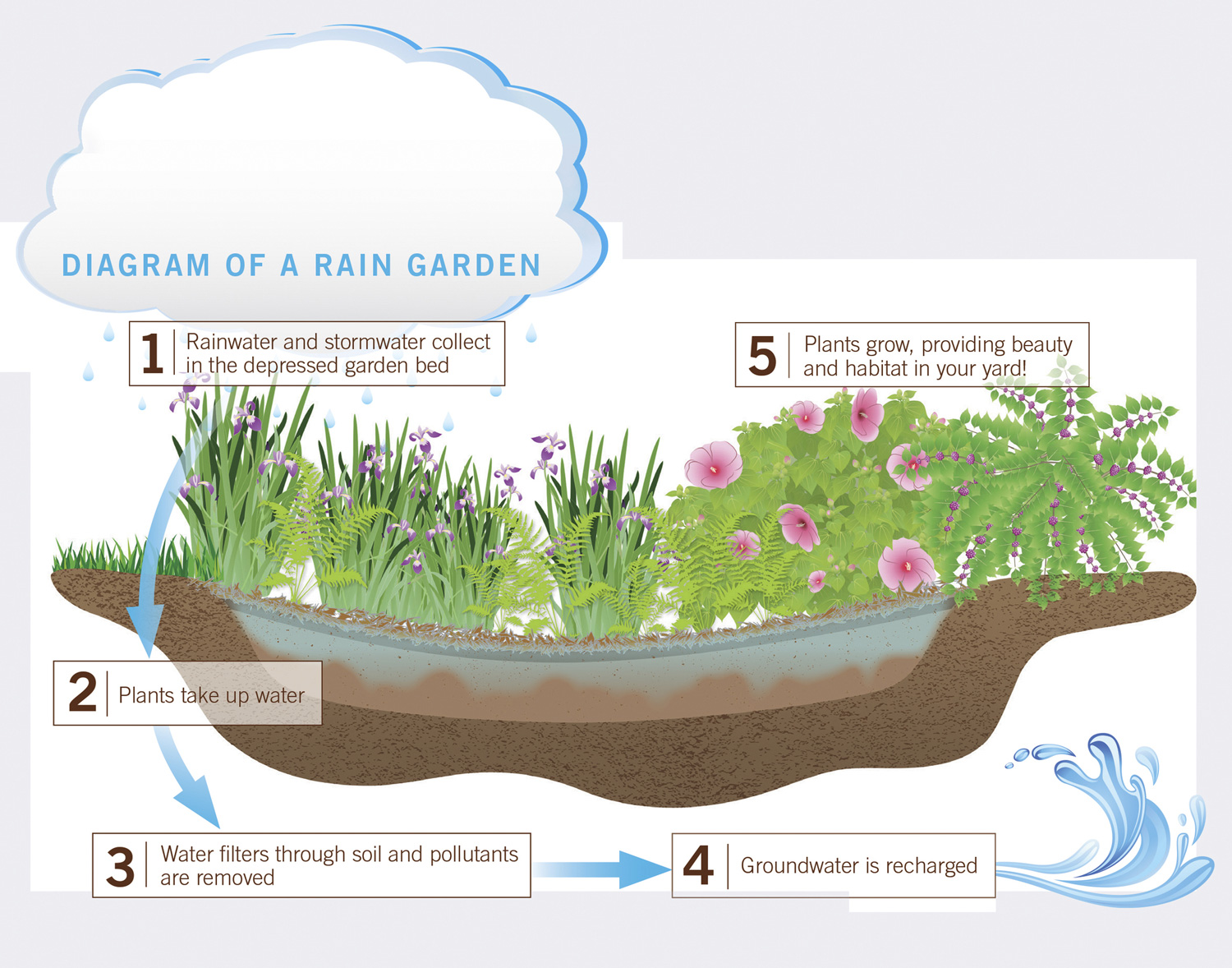That Rainy-Day Feeling
Rain Gardens: A green-solution to storm water pollution
One of the great things about living in South Carolina is the temperate climate that allows us to enjoy outdoor living almost all year long. And because we get ample rainfall, close to 50 inches a year, we enjoy beautiful gardens and plants that bloom continuously. As wonderful as this adequate rainfall is, it does come with its challenges—one of which is managing the stormwater and runoff from roofs and streets.
Fortunately, there is a great way to address this problem in a manner that is both cost-effective and aesthetically pleasing. I’m talking about rain gardens—a green solution to storm water pollution.
A rain garden is a landscaped depression that uses a mix of sand, compost and vegetation to allow stormwater runoff to soak down into the earth and be filtered, thereby absorbing excess water and removing pollutants. These low-maintenance landscape features prevent pollution from flowing downstream and contaminating local waterways.
Rain gardens not only filter out pollutants they also attract and provide food and shelter for butterflies, birds and other wildlife. They can fit into any landscape—large or small, formal or naturalistic.
Best planted with native grasses, small shrubs and flowering perennials, rain gardens can be planted with edible plants too. Plants such as asparagus, strawberry, spicebush and elderberry are a few edible plants that can be incorporated into a rain garden. However, planning and care must be taken when incorporating edibles. It’s best to use plants whose edible portion is above ground, and to plant only where runoff is from a clean source, where you’re sure there isn’t contamination from a driveway, rooftop or pet waste.
Prepare
Designing and building a rain garden is a great do-it-yourself project for the novice, as well as the experienced gardener, and something the entire family can participate in.
According to Kim Morganello, water resource agent at the Clemson Cooperative Extension, it’s important to start with healthy soil. To give your rain garden plants an extra boost and promote infiltration, it is a good idea to amend soil with compost and sand. Sand will help with infiltration, and compost will help create a healthy soil environment for plants and beneficial microbes to grow and remove pollutants. Ideally, try for a mix of 20–30% topsoil, 20–30% compost, and 50–60% sand. Mix well for a “salt and pepper” look, indicating a mix of soil, sand and compost.
Plant
Once the rain garden’s beds are prepared, it’s time to select plants. Since there are a variety of conditions within the rain garden—the berm and edge, which are raised and dry out quickly, and the pool, which is moist and holds water for a period of time—selecting the right plant for the right place is important. Native plants adapt well to varying conditions within each section, so keep that in mind when selecting.
Use a variety of forms, textures and color to create interest. Small trees and shrubs provide structure, while herbaceous plants can provide season-long blooming and grasses add movement and flow.
It is also a great idea to incorporate plants that are in other parts of the landscape into the rain garden thereby creating continuity in the design. When ready to install, follow the same structure as you would in any other garden.
Mulch Matters
Spreading a layer of mulch across the rain garden is the next step after planting. Mulching is an important feature of a rain garden for several reasons and benefits. Mulch helps retain moisture, moderates soil temperature, provides cover to the soil creating a healthy balance of microbes and serves as a weed barrier.
The Extension’s Morganello, and Amy Sarconi, Extension associate, have put together a resource manual providing an outline on how to install your rain garden. The Carolina Rain Garden Initiative provides tools and resources to assist with the installation of rain gardens in diverse settings such as yards, schoolyards, community centers and more.
For more information, visit clemson.edu/raingarden
Facts:
A 1,000-square-foot roof area can generate 600 gallons of water during a one-inch rain event.
Rain gardens are NOT mosquito breeding grounds. Rain gardens typically drain in less than 24 hours, while mosquitoes require 7 to 10 days of standing water to lay and hatch eggs.
Rain barrel over-flow can be directed to a rain garden.





